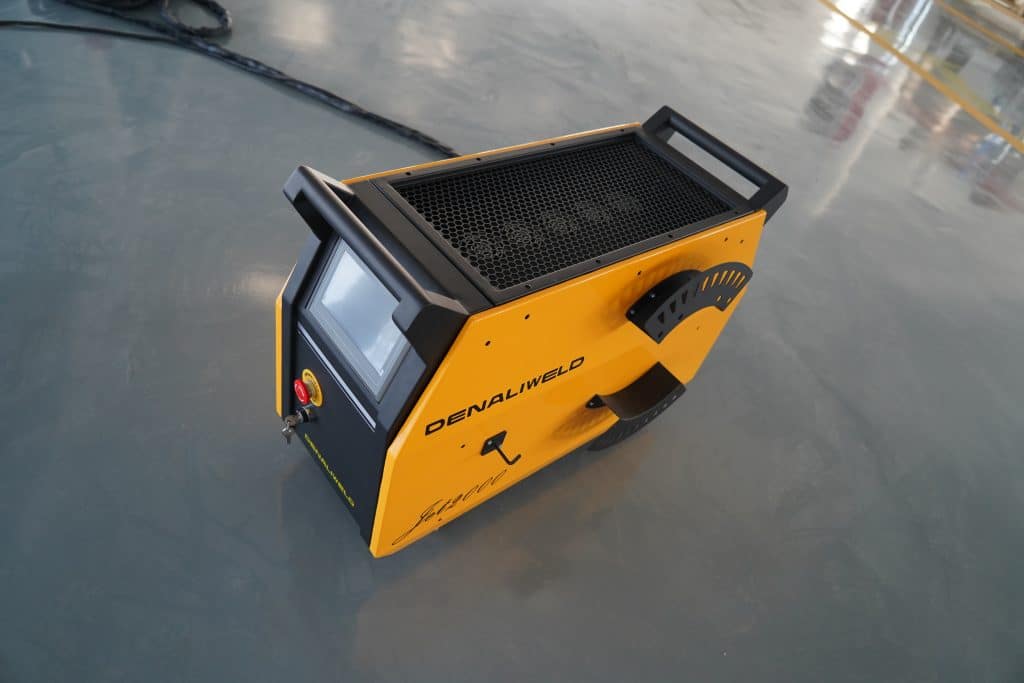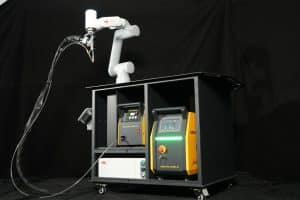Laser welding machine is a kind of welding technology using high-energy laser beam fusion workpiece, laser welding machine efficient and accurate characteristics of industrial production efficiency and quality has been significantly improved, along with the wide application of laser welding machine, people also have higher and higher requirements for its safety. Modern laser welding machines are generally equipped with a complete set of safety protection system, not only can protect the health of the operator, but also improve the overall safety of the working environment. This article will explain in detail the components of the safety system, as well as their functions and roles.
Components of a laser welding machine
Understanding the components of a laser welding machine improves the user’s proficiency and allows the user to have a better understanding of its safety and makes later maintenance and upkeep easier.
The laser is the core component of the laser welding machine, the main role is to produce a laser beam as a heat source in the welding process. The laser beam produced by the laser is characterized by high energy density, high precision and high directionality, and can be focused to a very small area to achieve welding.
The optical system includes focusing mirrors, reflectors, etc. It is responsible for focusing, directing and adjusting the laser beam to ensure welding precision.
The welding head is the device that transmits the laser beam to the workpiece, and it consists of a refractor and a focusing mirror. The welding head focuses the laser beam as needed to produce a high energy density laser weld spot.
The role of the power supply is to convert the AC power supply to DC power supply, to provide stable current and voltage for the laser, to ensure the stability of the output power and wavelength of the laser, and also play a role in controlling the laser switch.
The control system can adjust the laser power, frequency, focal length, spot size and position, etc., to ensure the safe and reliable operation of the whole machine and improve the welding quality.
The cooling system is generally divided into air-cooled and water-cooled, used to cool the laser and other heat-sensitive components, to prevent overheating damage to these parts, resulting in machine failure.
Safety systems minimize the risk of injury to the user and others in the welding scene if the user does not follow the specifications for use.
Safety risks of laser welding machines
Laser welding machines are a considerable help to modern industrial production, but they also carry certain safety risks.
The high-energy laser beams produced by laser welding machines provide high-intensity light energy that can damage the eyes and skin of operators if they do not wear appropriate protective gear.

Gases emitted and fumes generated during the welding process may cause damage to the operator’s respiratory system. Effective ventilation and the wearing of masks or filtered respirators can be effective in minimizing the risk of gases and fumes.
When welding is performed, high temperature areas are created, which may lead to a fire risk if flammable materials are present in the welding area. Avoid placing flammable materials in the welding area while welding is in progress.
Incorrect operation may lead to certain unpredictable malfunctions of the laser welding machine, so be sure to follow the instructions and use it correctly when operating.
If the laser light is shone on other objects or the human body during use, it may cause damage to the objects or injury to the human body. It is prohibited to point the welding head towards areas other than the workpiece when the laser is emitting light to avoid danger.
Safety Features of Laser Welding
Laser welding machines are often equipped with a laser beam monitoring module, a system that monitors the position and intensity of the laser beam in real time, as well as any anomalies in the welding process. By continuously monitoring the status of the laser beam, the system can respond quickly to potential problems. As soon as laser radiation is detected to be outside of safe limits, the system will immediately interrupt the laser emission, preventing the laser from causing serious injury. This real-time monitoring mechanism is the first line of defense in protecting against laser hazards.
The laser welding machine is equipped with an emergency stop button on the mainframe, which can be quickly pressed by the operator or other staff when they realize that a dangerous situation is about to occur or has already occurred, and the mainframe will immediately shut down to prevent further accidents from occurring. This button is usually easy to operate and ensures that staff can act quickly when needed, thus increasing safety in emergency situations.

Considering that the operator of the handheld laser welding machine may be far away from the main machine when performing welding work, the welding head is also equipped with an emergency stop switch. When the operator notices danger, he or she can directly press the emergency stop switch on the welding head, and the main machine of the welding machine will also be shut down immediately, preventing dangerous situations from occurring.

Laser welding generates high temperatures in the weld area, so the equipment is usually equipped with temperature control and cooling systems. These systems reduce the risk of fire and heat damage by monitoring and regulating the temperature of the equipment to prevent it from overheating. They also ensure that the equipment operates within a stable operating temperature range, increasing the overall safety of the equipment.
In order to minimize the risk of fumes and harmful gases generated during the welding process, laser welding equipment is equipped with filtration systems. These systems use high-efficiency filters to filter out harmful particles and gases, reducing their impact on the operator’s respiratory system. By providing a clean working environment, filtration systems reduce the risk of respiratory illnesses and ensure operator respiratory health.
Safety signs are clearly displayed on the equipment, and various types of safety signs are posted in the welding work area to alert operators and other personnel to potential hazards and the proper use of protective equipment. Welding operators are required to receive safety training before starting work, including laser radiation, equipment operation and emergency response.
The importance of the safety system
In the industrial production process, safety is the first priority. The laser welding machine safety system can play an extremely protective role for the operator, equipment and working environment, and its importance is self-evident.
Laser welding machine in the work of light and gas will cause certain hazards to the operator, wearing protective masks, protective clothing, masks, etc. can effectively reduce these hazards, to protect their life safety and health.
A variety of safety measures of the safety system can prevent the occurrence of accidents or reduce the degree of harm of accidents, to protect the safety of the welding area.
Laser welding machine works under high temperature, high pressure, high energy and other environments, there is a certain risk of failure, through the safety function, laser welding machine can real-time monitoring of key parameters, prevention of potential problems, timely response to reduce the likelihood of accidents, reduce the risk of equipment loss and production interruption.
The safety features of the laser welding machine are more comprehensive, which can ensure that the equipment complies with relevant regulations and standards, and reduce the potential legal liability and economic risks.
Summary
Through the detailed analysis of the safety protection functions of laser welding, we understand the potential safety risks in the laser welding process, and also gain an in-depth understanding of the role and advantages of various safety protection functions. Together, these functions constitute a complete set of safety protection measures to ensure the personal safety of operators and the stable operation of equipment during the laser welding process. Driven by the continuous development of technology and safety standards, the safety of laser welding equipment will continue to improve, bringing a safer and more reliable production environment to the industrial manufacturing sector. If you are considering a laser welding machine, contact DENALI and we will provide you with the best options for your needs.







